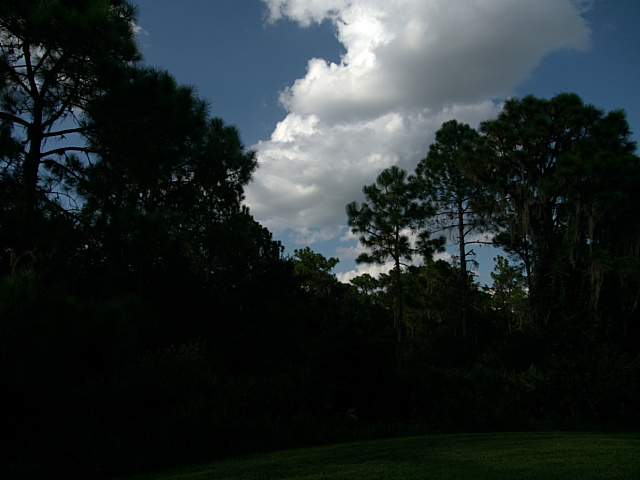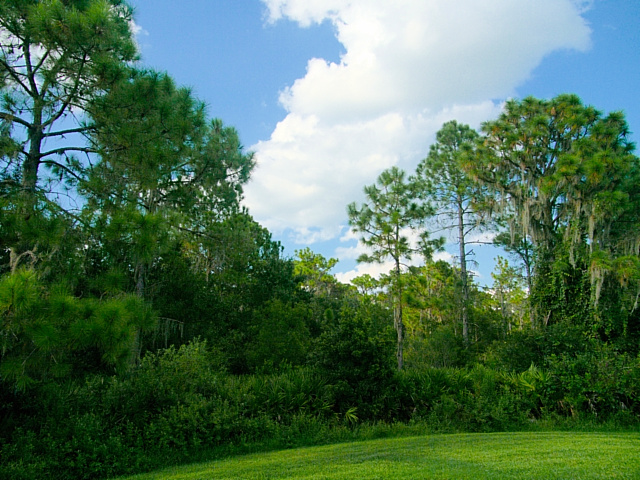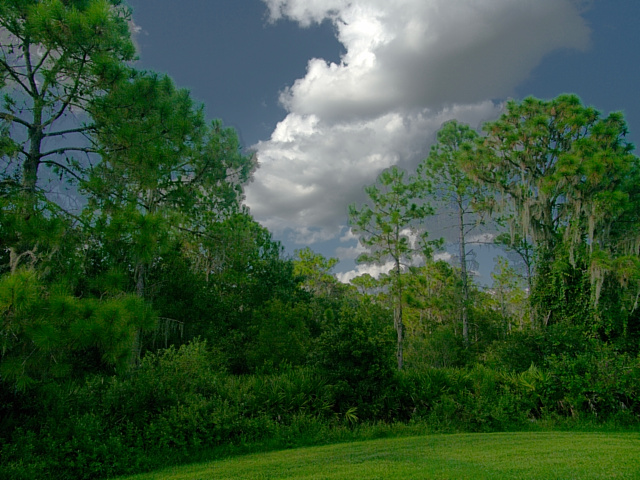Ken
Newbie

Posts: 36
|
 |
« Reply #45 on: September 15, 2010, 11:07:07 PM » |
|
You read my mind!
Trying to not be presumptious... but when this discussion started some time ago by others, I felt that more "accurate color" editing (like your tone sharpening) would be on it's way. A little less LR .. a little more QIU!
Now we can all act like kids, waiting for Christmas morning.
Thanks!
|
|
|
|
|
 Logged
Logged
|
|
|
|
|
Terry-M
|
 |
« Reply #46 on: September 16, 2010, 08:42:20 AM » |
|
Hey maybe that'll be the next big thing in Qimage Ultimate: tone targeted contrast mapping. Oh, yes please!  There are many occasions when I attempt to change the contrast in areas of an image with a curve, like a cloudy sky but in darker areas too. TT CM would not only make it easier but would, I think, do things that are impossible with a curve. Terry |
|
|
|
|
 Logged
Logged
|
|
|
|
mburke
Jr. Member
 
Posts: 61
|
 |
« Reply #47 on: September 16, 2010, 11:31:23 AM » |
|
That would be really cool.
Mike
|
|
|
|
|
 Logged
Logged
|
|
|
|
|
Seth
|
 |
« Reply #48 on: September 16, 2010, 12:39:25 PM » |
|
Seth, you just repeated everything I just said. But I think you are trying to place requirements on HDR that do not exist. There are a number of methods of achieving HDR and taking multiple shots is not a requirement. Some people do it that way but it is not always necessary: and the point of my post here, not as necessary as some people believe. You could take several JPEG's and run a contrast reduction on them to create an HDR image. When you do that, you are simply taking the dynamic range that exceeds that of a "standard" photo (one designed to be displayed on your monitor/printer) and compressing it so that it now fits into the smaller space of your monitor/printer. Now a raw image has several stops more range than a JPEG to begin with so I could do the same thing with one raw and get the same results.
The dynamic range of the sensor is irrelevant. And you are dead wrong that you can't expose for sky and still get good detail in the backlit landscape from one raw. I do it all the time, and so do many others. Here's a quick example first with standard processing and then with HDR done simply by using the fill light in Qimage's raw refine. This is from a single raw, all processing done in Qimage Ultimate: I have to respectfully disagree!! No it is not always necessary, I agree here. "Adjusting" your first image got your foreground at the expense of the clouds. Two images (minimum) at 2-3 EV spread might have captured both. Photomatrix or CS5 or Picturenaut would give you all. Running gamma on the mid and shadows had to leave noise and a lesser rendition of all the greens in that landscape--they are compressed already. Denoising is still "de-sharpening" to some degree. And, you lost the sky to get the foreground(?!?!) It really doesn't matter how you got there! Think about it this way. You have a point and shoot that doesn't even offer raw and I have a Canon 5D Mark II. You take five JPEG shots on your point and shoot and you end up with a decent landscape/sky shot that you call HDR because you merged multiple photos and "crunched" the dynamic range.
. Oh, no. Not the point-and-shoot. Their sensors cannot capture what the larger sensor can. That's another story. And, how can you say sensor range is irrelevant? That is like comparing the latitude of chrome film to the latitude of color neg. It is a matter of physics. |
|
|
|
|
 Logged
Logged
|
Seth
<CWO4 (FMF) USN, Ret.>
|
|
|
|
Seth
|
 |
« Reply #49 on: September 16, 2010, 12:41:28 PM » |
|
It'd probably look a bit "odd" keeping the sky and clouds from the first shot. Might look cool though. The short answer is no: the current fill in Qimage was designed to remap everything so that it remains "connected". Obviously the data is there to do it though because both renditions came from the same raw file, so with the right tone mapping it can certainly be done. Hey maybe that'll be the next big thing in Qimage Ultimate: tone targeted contrast mapping.  Ahhhhhhh! You mean tone mapping like the HDR software does.   |
|
|
|
|
 Logged
Logged
|
Seth
<CWO4 (FMF) USN, Ret.>
|
|
|
|
admin
|
 |
« Reply #50 on: September 16, 2010, 12:48:23 PM » |
|
"Adjusting" your first image got your foreground at the expense of the clouds. Two images (minimum) at 2-3 EV spread might have captured both.
Surely you can see how that too is irrelevant! The clouds only changed due to the curve I applied. Obviously the full range of the clouds is there and the foreground too because they came from the same shot. You could do the same thing with no change whatsoever to the clouds with just a different tone curve. The two images are proof that the full detail exists for both clouds and foreground. And, how can you say sensor range is irrelevant? That is like comparing the latitude of chrome film to the latitude of color neg. It is a matter of physics.
It is relevant only to the magnitude of the HDR but not relevant to whether or not you can do HDR at all on a single raw. What I meant was that sensor range is not relevant in our discussion because ALL sensors have an EV range that far exceeds that capable of being reproduced on a monitor or printer. Therefore HDR is possible regardless of the sensor. Even cheap cameras that offer raw have at least twice the dynamic range of a monitor/printer. Mike |
|
|
|
|
 Logged
Logged
|
|
|
|
|
admin
|
 |
« Reply #51 on: September 16, 2010, 01:58:26 PM » |
|
You could do the same thing with no change whatsoever to the clouds with just a different tone curve.
Just to illustrate, like this for example. I did this with a 10 minute mod to Qimage's fill light: Original shot: The two HDR'd shots, one normal fill and one with a different tone curve to preserve sky/cloud detail: The two HDR'd shots, one normal fill and one with a different tone curve to preserve sky/cloud detail:  I still think the one that preserves full cloud detail looks a little surreal, but hey, whatever floats your boat. It's less choppy/surreal than many of the multi-shot HDR samples I've seen! Mike |
|
|
|
|
 Logged
Logged
|
|
|
|
|
Seth
|
 |
« Reply #52 on: September 16, 2010, 02:35:17 PM » |
|
Hmmmm. Now keep in mind I am at a disadvantage since my second image is Mike's already "worked" JPEG. (Each took only 3-4 minutes). BTW- These are worked in Adobe RGB so look a little less in sRGB here. Your original worked:  PS CS5 on just this using ACR Recovery and some Sat. The cloud info is still there:  PS CS5 HDR Pro using your two JPGs:  Photomatix HDR. Yes, looks surreal, but would be better with two RAW files:  Photomatix Fusion setting. Your two JPEGs. Looks natural, saves both areas.  As I said, if I took the 10 minutes, they would be better. Of course, a polarizer might have solved much of this from the get-go. YMMV.  |
|
|
|
|
 Logged
Logged
|
Seth
<CWO4 (FMF) USN, Ret.>
|
|
|
|
admin
|
 |
« Reply #53 on: September 16, 2010, 07:26:26 PM » |
|
|
|
|
|
|
 Logged
Logged
|
|
|
|
|
Seth
|
 |
« Reply #54 on: September 17, 2010, 12:29:35 PM » |
|
These are the only two I looked at but, EXACTLY what I said/did. Use multiple variants of the same RAW! (In the above case I had to use your JPEGs.) My point exactly.     I have been doing that for years. It is what I was explaining to folks. However, that is NOT was proposed. Thanks for backing me up. |
|
|
|
|
 Logged
Logged
|
Seth
<CWO4 (FMF) USN, Ret.>
|
|
|
|
admin
|
 |
« Reply #55 on: September 17, 2010, 12:52:06 PM » |
|
These are the only two I looked at but, EXACTLY what I said/did. Use multiple variants of the same RAW! (In the above case I had to use your JPEGs.) My point exactly.     I have been doing that for years. It is what I was explaining to folks. However, that is NOT was proposed. Thanks for backing me up.  LOL. Nice try with the backpedaling. Might work for those who don't take time to read the entire thread but here is a quote from you in post 33: Raw is really not HDR. It is just all the sensor data without the JPEG interpolation and compression. HDR is done with two or more DIFFERENT exposures. I think sme are using "tone mapping" and calling it HDR.
Likewise, exposing for highlights then "pulling out" the under exposed shadows with ANY program can result in a lot of shadow noise. And more from your post 41: Sensors have EV range limits also. In order to get a bright cloudy sky over a dark, backlit subject you need at least two images. So, your position is exactly what again?  Also, nice to note that Qimage can do HDR in one pass rather than having to use "variants". You've proved my point quite well. With the right software you can do HDR with a SINGLE raw photo. Some programs might force you to make multiple copies from the same raw to get different exposures but obviously if the data is there and the software works properly, the software ought to be able to do that for you, in one pass, without the unnecessary "splitting". Mike |
|
|
|
|
 Logged
Logged
|
|
|
|
paulca
Newbie

Posts: 4

|
 |
« Reply #56 on: September 21, 2010, 12:44:23 AM » |
|
 I see your point Mike and even with my new Studio upgrade I can appreciate what can be done with a RAW file. However, although you can do something HDRish with a single image there remain scenes with a dynamic range that exceeds the sensor range (which let's face it is only 8 or 9 stops at most. Unless you're disgustingly wealthy and own a medium format digital back). The whole point of HDR is that it will take a range of values that are H(igher) than the Dynamic Range of the camera sensor and produce an image with a dynamic range that can be displayed on 'normal' devices (printers/monitors/iPhones etc) and that can only be done with multiple exposures. Sensor range is relevant for true HDR - otherwise they'd have called it something else.  That is what it is, regardless of how it is used or abused. A single image HDR is not strictly HDR as the dynamic range of the image is within that of the camera sensor (assuming you've exposed correctly and the dynamic range of the scene is within that of the sensor etc). Splitting hairs; what you will end up with is an image processed with the appropriate software for an HDR effect. What you have produced is something that takes the available range of the sensor (ADR - available dynamic range?) and seems to adjusts very nicely thank you very much for the extremes in that range - not HDR though by definition. I would agree totally that for the majority of cases you possibly wouldn't 'need' HDR to produce a realistic image, especially with Qimage, but for a lot of images, even those within dynamic range, reality often isn't what you're aiming for. Paul.
|
|
|
|
|
 Logged
Logged
|
|
|
|
|
rayw
|
 |
« Reply #57 on: September 21, 2010, 02:05:56 AM » |
|
The dynamic range of the camera sensor is fixed. However, considering a 3 image hdr, the 'normal shot' will not have as many photons into the darker areas, compared to the image that is overexposed. The 'normal shot' also allows too many photons into the bright areas compared to the underexposed image. Combining the three images, which usually requires specific software and user skills allows the detail in the distribution to be optimised (or not  ). By manipulating a single normal image you can not get the subtle changes that can be obtained by manipulating three - it is sort of like using a wide angle lens for a single image compared to stitching a number of images using a 'normal' lens to increase detail, but for colour instead. In many instances, you can get away with a single image, in particular if your camera raw is 12/14bit or more and you work in a 16bit or greater colour space, and output in 8bit, but you can never reliably generate information that is not there in the first place, and you are likely to get banding and noise. The specialist software, such as photomatix, even working on 8bit low res jpegs can produce better results than may be obtained with raw processing of a single image, as Seth's examples have shown. However, it all depends, as in most things, on finances, skill and how easily folk are satisfied, I guess. Best wishes, Ray |
|
|
|
|
 Logged
Logged
|
|
|
|
|
admin
|
 |
« Reply #58 on: September 21, 2010, 02:13:35 PM » |
|
Sensor range is relevant for true HDR - otherwise they'd have called it something else.  Sorry. You are right that it is relevant but wrong that true HDR means an image that exceeds the sensor DR. Look it up in Wiki: "a set of techniques that allow a greater dynamic range of luminance between the lightest and darkest areas of an image than standard digital imaging techniques or photographic methods"Key words here: "standard digital imaging techniques or photographic methods". I would not call single raw HDR tone mapping a "standard digital imaging technique". In any case, even IF your definition of a "standard technique" is different than mine, you will not find a requirement anywhere that states that the definition of HDR is that it must exceed the dynamic range of the sensor! That is simply not true. HDR is nothing more than dynamic range compression that is done in such a way that it exceeds the dynamic range of the output device (monitor/printer), not the sensor. Why? Because HDR is about exceeding limits and as long as you exceed the limits of the weakest link in the chain, you have an HDR photo. A good photographic print has a DR of maybe 100:1. Your monitor: maybe twice that. Your camera sensor: 2 to 4 times the DR of the monitor. The very reason we need HDR to begin with is due to the limitations of our output devices and the need to display more range than they can. Now I've never argued that you can do any and all HDR work in a single raw and that multiple raws will never be a benefit. Quite the contrary. I gave examples of where the dynamic range may exceed even that of the sensor (raw file). What I started out saying in this thread is that many times people use multiple raws when in fact a single raw will do as good or better. I think Jeff's examples are good proof of that. And yes, it's fairly easy to come up with an example where multiple raws would do better than a single one. But that doesn't mean you can't get true HDR from a single raw. You certainly can! Mike |
|
|
|
« Last Edit: September 21, 2010, 02:42:16 PM by Mike Chaney »
|
 Logged
Logged
|
|
|
|
|
Owen Glendower
|
 |
« Reply #59 on: September 23, 2010, 04:00:23 PM » |
|
Hey maybe that'll be the next big thing in Qimage Ultimate: tone targeted contrast mapping. Oh, yes please!  There are many occasions when I attempt to change the contrast in areas of an image with a curve, like a cloudy sky but in darker areas too. TT CM would not only make it easier but would, I think, do things that are impossible with a curve. Terry I often try to do this myself, with less than satisfactory results. TTCM would indeed be a great feature. |
|
|
|
|
 Logged
Logged
|
|
|
|
|


 Qimage registration expired? New lifetime licenses are only $59.99!
Qimage registration expired? New lifetime licenses are only $59.99!


 Qimage registration expired? New lifetime licenses are only $59.99!
Qimage registration expired? New lifetime licenses are only $59.99!